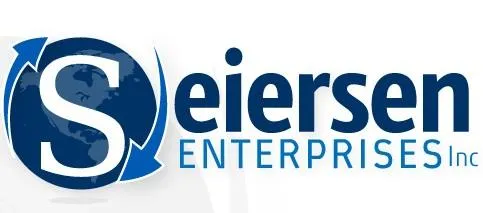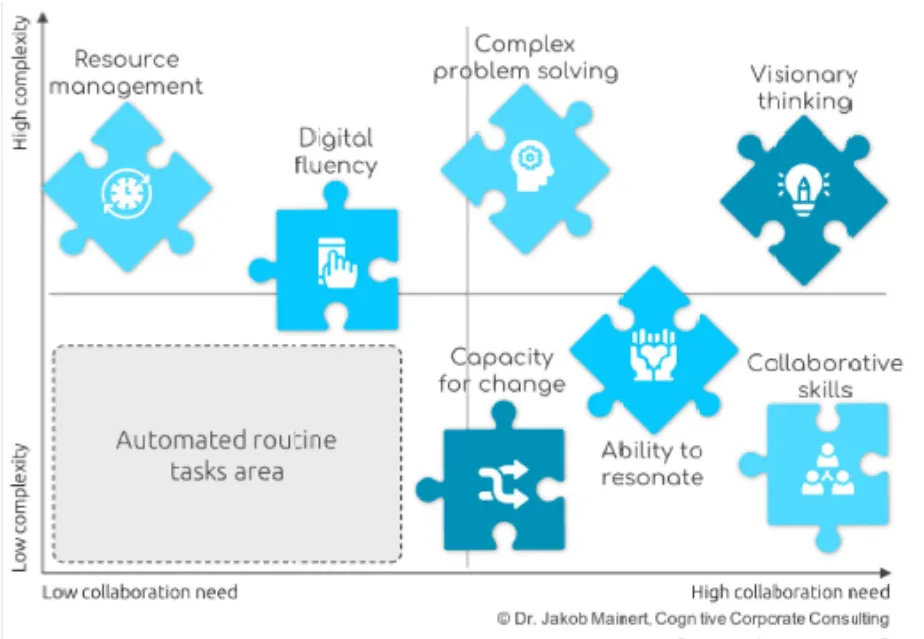
Welcome to Seiersen Enterprises
E
Enjoy our blogs here
Sustainable Supply Chain Value Through the Right Deals with the Right Trading Partners
Digitizing the Supply Chain
Check out my blogs on Linkedin: https://www.linkedin.com/in/nicholasseiersen/recent-activity/articles/
Trust & Trading Relationships

Procurement's next challenge
Many corporate leaders saw the hard work and insight that supply chain people brought to bear to help their organizations live through and even prosper during the pandemic that we hope is on the wane. They now see a return to booking savings as the driving priority. I think there is a better option.
I see the opportunity as a balance between delivering the Value the business requires from its trading relationships with the supply resilience that has been so challenging.

This 2x2 matrix can be deceptively simple. You can position your strategic initiatives on it to see where you have placed your emphasis and assess whether this is where you should be putting your energy.
In an environment where compliance and the avoidance of value leakage is important, enforcing policy and contracts are effective tools. You are likely to be seen as the enforcers and not readily invited to the table when the strategic discussions happen, just called in to “paper the deal.” Implementing Procurement software suites is a good way of driving self-service compliance which drives business to your preferred suppliers and gives you credibility when you negotiate, which in turn can drive value. It also provides productivity enhancements that allow you to bid more spend or more precisely, thereby delivering better value. Since transactions are automated and integrated, the speed and visibility improve responsiveness to issues.
Where compliance is still a priority, but value realization is also important, policy and contract management remain important, but bringing a more aggressive and informed approach to the bidding process will deliver more savings. These may not be sustainable, and you may find quality and service falling to the bare minimum, but if the business is in difficulty, this is a fast way to reduce costs. Reverse auctions and other online bidding tools drive apples-to-apples comparisons that drive prices down. Suppliers hate these and may try to sabotage the process to recoup the margin the competitive pressure has crushed. Strategic sourcing is more effective in delivering value as it aligns with the business’ requirements and can look at the full cost of ownership picture. Of course, in both cases, loading the agreements into an E-Procurement system will drive better efficiencies and compliance with the deals.
Where Value and Resilience are important – where I suspect most supply chain organizations should be – a much stronger relationship with the businesses is imperative. The focus is finding the right deal with the right supplier so that the business can realize its strategic objectives. Since this is a perennial concern of CPOs – that the staff lack the business acumen to engage constructively with the business and to discuss non-monetary aspects of the commercial relationship – talent development becomes a priority. With well-rounded staff, the organization can pursue Category Management, where comprehensive analysis of requirements, input costs, market dynamics, key players, and strategic drivers are considered, when the category strategies are developed and pursued.
More on collaborative commerce next time.
Data Quality

Procurement's next challenge
Many corporate leaders saw the hard work and insight that supply chain people brought to bear to help their organizations live through and even prosper during the pandemic that we hope is on the wane. They now see a return to booking savings as the driving priority. I think there is a better option.
I see the opportunity as a balance between delivering the Value the business requires from its trading relationships with the supply resilience that has been so challenging.

This 2x2 matrix can be deceptively simple. You can position your strategic initiatives on it to see where you have placed your emphasis and assess whether this is where you should be putting your energy.
In an environment where compliance and the avoidance of value leakage is important, enforcing policy and contracts are effective tools. You are likely to be seen as the enforcers and not readily invited to the table when the strategic discussions happen, just called in to “paper the deal.” Implementing Procurement software suites is a good way of driving self-service compliance which drives business to your preferred suppliers and gives you credibility when you negotiate, which in turn can drive value. It also provides productivity enhancements that allow you to bid more spend or more precisely, thereby delivering better value. Since transactions are automated and integrated, the speed and visibility improve responsiveness to issues.
Where compliance is still a priority, but value realization is also important, policy and contract management remain important, but bringing a more aggressive and informed approach to the bidding process will deliver more savings. These may not be sustainable, and you may find quality and service falling to the bare minimum, but if the business is in difficulty, this is a fast way to reduce costs. Reverse auctions and other online bidding tools drive apples-to-apples comparisons that drive prices down. Suppliers hate these and may try to sabotage the process to recoup the margin the competitive pressure has crushed. Strategic sourcing is more effective in delivering value as it aligns with the business’ requirements and can look at the full cost of ownership picture. Of course, in both cases, loading the agreements into an E-Procurement system will drive better efficiencies and compliance with the deals.
Where Value and Resilience are important – where I suspect most supply chain organizations should be – a much stronger relationship with the businesses is imperative. The focus is finding the right deal with the right supplier so that the business can realize its strategic objectives. Since this is a perennial concern of CPOs – that the staff lack the business acumen to engage constructively with the business and to discuss non-monetary aspects of the commercial relationship – talent development becomes a priority. With well-rounded staff, the organization can pursue Category Management, where comprehensive analysis of requirements, input costs, market dynamics, key players, and strategic drivers are considered, when the category strategies are developed and pursued.
More on collaborative commerce next time.
Other Supply Chain Topics

Procurement's next challenge
Many corporate leaders saw the hard work and insight that supply chain people brought to bear to help their organizations live through and even prosper during the pandemic that we hope is on the wane. They now see a return to booking savings as the driving priority. I think there is a better option.
I see the opportunity as a balance between delivering the Value the business requires from its trading relationships with the supply resilience that has been so challenging.

This 2x2 matrix can be deceptively simple. You can position your strategic initiatives on it to see where you have placed your emphasis and assess whether this is where you should be putting your energy.
In an environment where compliance and the avoidance of value leakage is important, enforcing policy and contracts are effective tools. You are likely to be seen as the enforcers and not readily invited to the table when the strategic discussions happen, just called in to “paper the deal.” Implementing Procurement software suites is a good way of driving self-service compliance which drives business to your preferred suppliers and gives you credibility when you negotiate, which in turn can drive value. It also provides productivity enhancements that allow you to bid more spend or more precisely, thereby delivering better value. Since transactions are automated and integrated, the speed and visibility improve responsiveness to issues.
Where compliance is still a priority, but value realization is also important, policy and contract management remain important, but bringing a more aggressive and informed approach to the bidding process will deliver more savings. These may not be sustainable, and you may find quality and service falling to the bare minimum, but if the business is in difficulty, this is a fast way to reduce costs. Reverse auctions and other online bidding tools drive apples-to-apples comparisons that drive prices down. Suppliers hate these and may try to sabotage the process to recoup the margin the competitive pressure has crushed. Strategic sourcing is more effective in delivering value as it aligns with the business’ requirements and can look at the full cost of ownership picture. Of course, in both cases, loading the agreements into an E-Procurement system will drive better efficiencies and compliance with the deals.
Where Value and Resilience are important – where I suspect most supply chain organizations should be – a much stronger relationship with the businesses is imperative. The focus is finding the right deal with the right supplier so that the business can realize its strategic objectives. Since this is a perennial concern of CPOs – that the staff lack the business acumen to engage constructively with the business and to discuss non-monetary aspects of the commercial relationship – talent development becomes a priority. With well-rounded staff, the organization can pursue Category Management, where comprehensive analysis of requirements, input costs, market dynamics, key players, and strategic drivers are considered, when the category strategies are developed and pursued.
More on collaborative commerce next time.
Office: Sidney, BC
Canada
Call 647-299-8360
Email:nick@seierseninc.com
Site: www.seierseninc.com

